巻号一覧

13 巻 (1978)
- 6 号 p. 287-
- 5 号 p. 235-
- 4 号 p. 187-
- 3 号 p. 111-
- 2 号 p. 53-
- 1 号 p. 1-
13 巻, 5 号
選択された号の論文の5件中1~5を表示しています
- |<
- <
- 1
- >
- >|
-
藤野 治之1978 年13 巻5 号 p. 235-242
発行日: 1978/10/30
公開日: 2010/02/26
ジャーナル フリーElectrical ship propulsion is not a new concept. Its history began at 1912, when the collier “Jupiter” installed with reciprocating engine and dc machines was built. Although many ships with electrical propulsion system known as T-2 tankers were built during World War II, only ships requiring excellent maneuverability, e. g. icebreaker and research vessel, adopt electrical propulsion system recently. This situation is caused by the disadvantages in volume, weight and cost of electrical propulsion, However, electrical propulsion has many advantages in addition to excellent maneuverability which fit in modernization of ship.
Technologies in every fields are progressing always. It is meaningful, therefore, to reevaluate the ship propulsion system, taking ac count of new technologies and/or improved technologies.
This paper gives historical reviews of electrical propulsion and modernization of ship at first. The features of several kinds of electrical propulsion and the problems encountered in adoption of superconducting machines are described. Some remarks are given about shipboard refrigeration system for superconducting machine. At last, the present status of researches and developments for superconducting ship propulsion, mainly in U.S.A., are reviewed.抄録全体を表示PDF形式でダウンロード (1094K) -
加藤 輝雄, 高村 三郎1978 年13 巻5 号 p. 243-249
発行日: 1978/10/30
公開日: 2010/02/26
ジャーナル フリーSeveral organic insulators in superconducting magnets for fusion reactors are irradiated in a fission reactor at 5K and their mechanical properties are measured at liquid nitrogen temperature (77K).
After irradiation with fast neutron fluence of 1.7×1017 nvt and γ dose of 4.5×108R, polypropylene is broken into pieces and polycarbonate and Mylar becomes too brittle to permit tensile test. Breaking stress and elongation of Nomex reduce as compared with that of unirradiated specimen. Kapton exhibits only a little decrease in breaking stress after irradiation of fast neutron fluence of 3.3×1017nvt and γ dose of 8.8×108R, and shows the most excellent properties against the irradiation.抄録全体を表示PDF形式でダウンロード (1096K) -
柳 秀治, 田村 孝章, 田畑 米穂1978 年13 巻5 号 p. 250-255
発行日: 1978/10/30
公開日: 2010/02/26
ジャーナル フリーA conventional liquid bath type cryostat connected with a helium refrigerator has been used for the irradiation at very low temperatures in a fast neutron source reactor, YAYOI. In order to start the experiments with the cryostat, it takes 4 to 6 hours to cool down and get ready for irradiation. Furthermore, it was not possible to transfer irradiated samples from the cryostat for irradiation to the other for measurements of electron spin resonance and resistivity, keeping the temperature of liquid helium.
Accordingly a simple and convenient cryostat which is capable of providing a wide range of temperatures from liquid helium to 300K, as well as transferring samples with less complexity had been required. In this paper, the design and fabrication of a simple continuous flow cryostat to meet our requirements mentioned above is reported.
Cooling time and the consumption rate of liquid helium during the operation at 4.2K under an output of the nuclear reactor of 500W are designed to be less than 30 minutes and less than 7 litres/hour, respectively.抄録全体を表示PDF形式でダウンロード (520K) -
低温工学協会研究委員会1978 年13 巻5 号 p. 256-271
発行日: 1978/10/30
公開日: 2010/02/26
ジャーナル フリーこの調査は, 科学技術庁の特別研究促進調整費による「極低温科学技術 (流体の特性, 安定化技術等) に関する総合研究」の一環として, 低温工学協会研究委員会で実施したものです。この総合研究は, 科学技術庁金属材料技術研究所, 通産省電子技術総合研究所, 計量研究所, 及び低温工学協会委託として50-52年度にわたって実施され, 研究委員会は低温工学協会に設置されました。アンケートは昭和52年8-10月に実施しましたが, 発送数は191通で, 回答数131通, 回答率は68%でした。アンケートの整理, 検討は, 小委員会を設けて行ないました。抄録全体を表示PDF形式でダウンロード (2108K) -
西田 啓一1978 年13 巻5 号 p. 272-277
発行日: 1978/10/30
公開日: 2010/02/26
ジャーナル フリーThis paper outlines the principle and the procedure of the leak test of cryogenic equipments made with the aid of a helium leak detector. The sprey, hood, vacuum chamber (bell jar) and sniffer methods are described.抄録全体を表示PDF形式でダウンロード (1105K)
- |<
- <
- 1
- >
- >|